This post was written for the Genealogy Matters Storyteller Tuesday Challenge: MILITARY MARVEL Due by June 3
*****
In 1951, the United States was in the thick of the Korean Conflict. George Lassalle was drafted in May of 1951 and completed basic training in Washington.
George was sent to cooking school which didn’t do him any good. He was an awful cook unlike his dad.
He shipped out to Japan and was stationed on Hokkaido with the 1st Calvary Division as part of the occupying force.
George was stunned at the poverty. When they moved camp, they buried food they couldn’t use per Army orders. As they left, villagers ran to the spot to salvage whatever food they could find.
4 May 1952 started like any other day. At 10:22 am, an 8.1 earthquake struck. Buildings toppled, trains derailed, railroad tracks buckled, and bridges collapsed.
According to George, some areas had hot water pipes outside of buildings which burst and scalded people as they fled.
Damage was compounded landslides which sent rock and snow towards villages.
8 tsunamis swept over the coast. Homes were flooded or swept out to sea. Two piers were lost and many boats sank. The village of Kiritappu was wiped off the map.
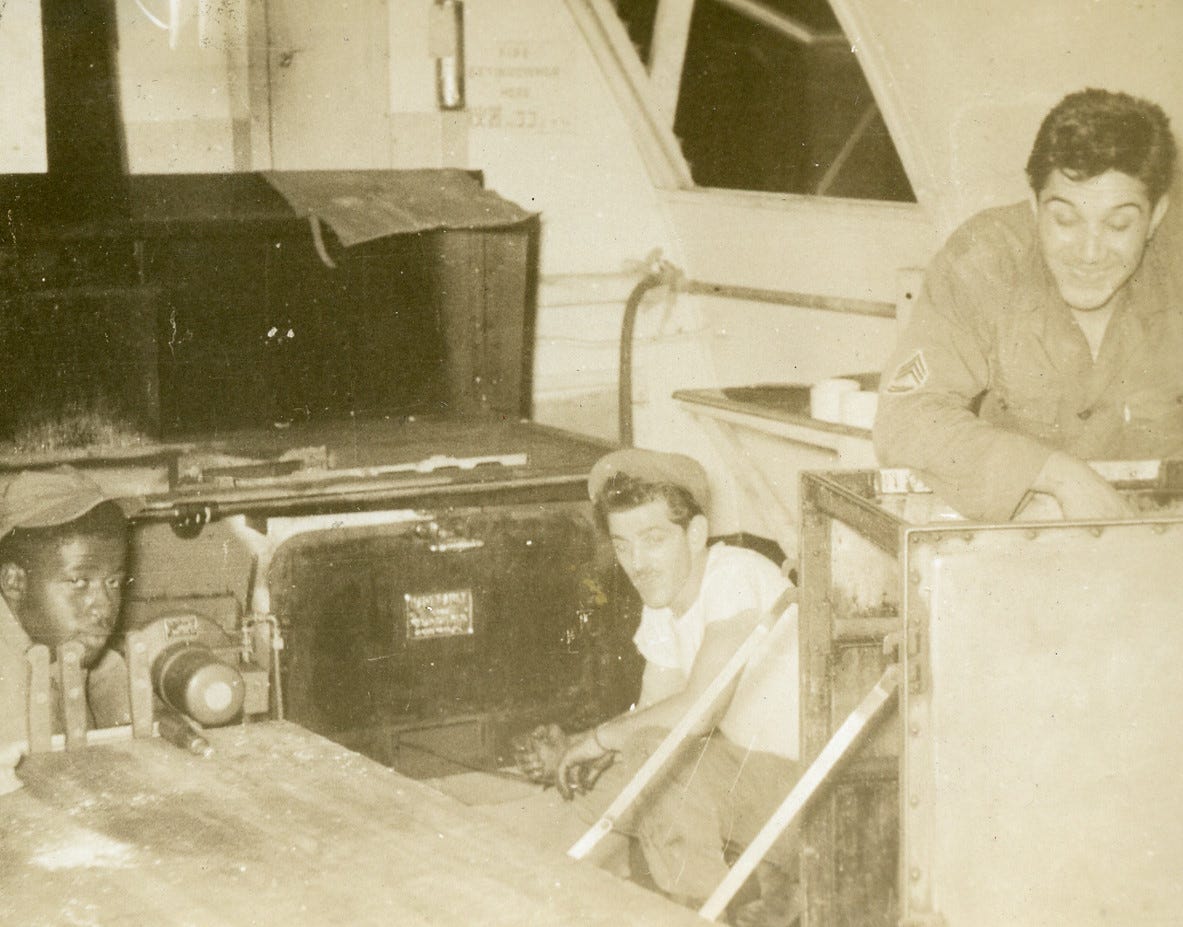
George was a California native. While he’d never experienced snow, he had been through earthquakes. But most of the other men hadn’t and they were unnerved.
General Matthew Ridgway ordered all military personnel to provide assistance.
As part of the 1st Calvary division, George went to Kashiro where they loaded an 8 car train with C-rations, blankets, and medicine. They traveled with the train getting supplies to where they were needed.
It was snowing and the train had no heat. It is likely on this mission that George got frostbite in his right foot.
31 people were killed, 572 injured. The low number of casualties was credited to people heeding the tsunami warning system.
When George thought about life in the Army, he never dreamed he’d be part of a relief effort. But that’s what happened.
Note 1: These photos are from my dad’s army photo album. Although he took several rolls of film, there were no photos of the earthquake damage. Perhaps they had orders not to take photos.
Note 2: George specifically remembered the bursting of outdoor hot water pipes. I could not find any reference to this in online accounts. This may have been a feature specific to the Army installation or a temporary setup.

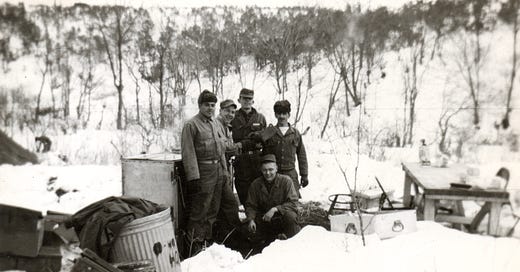


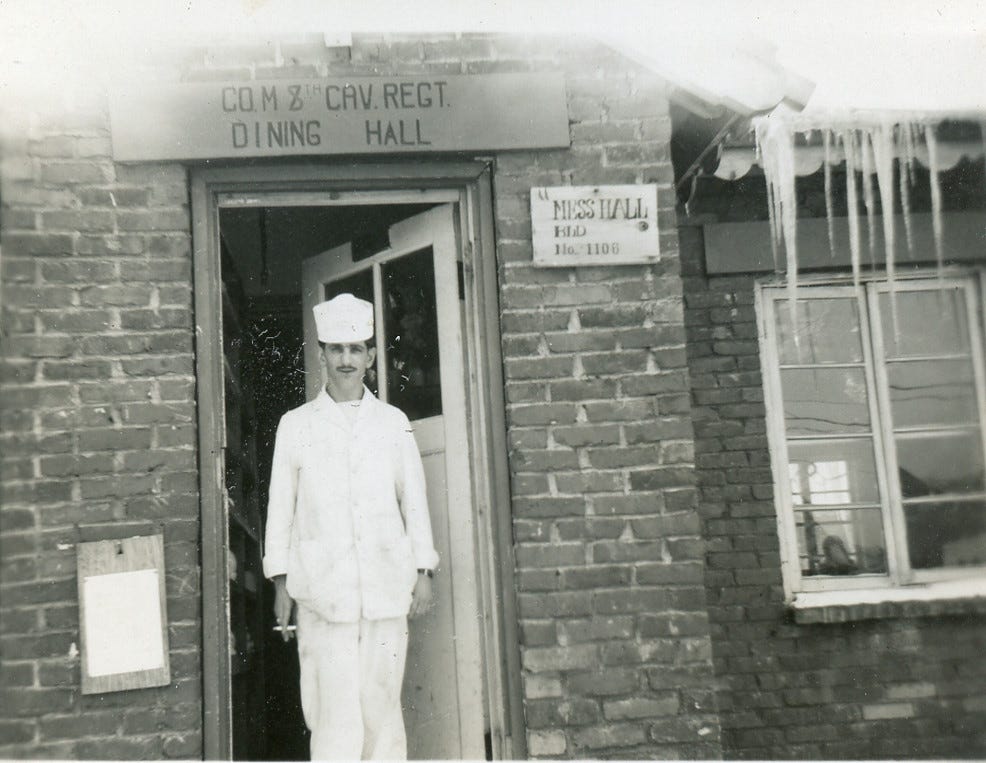
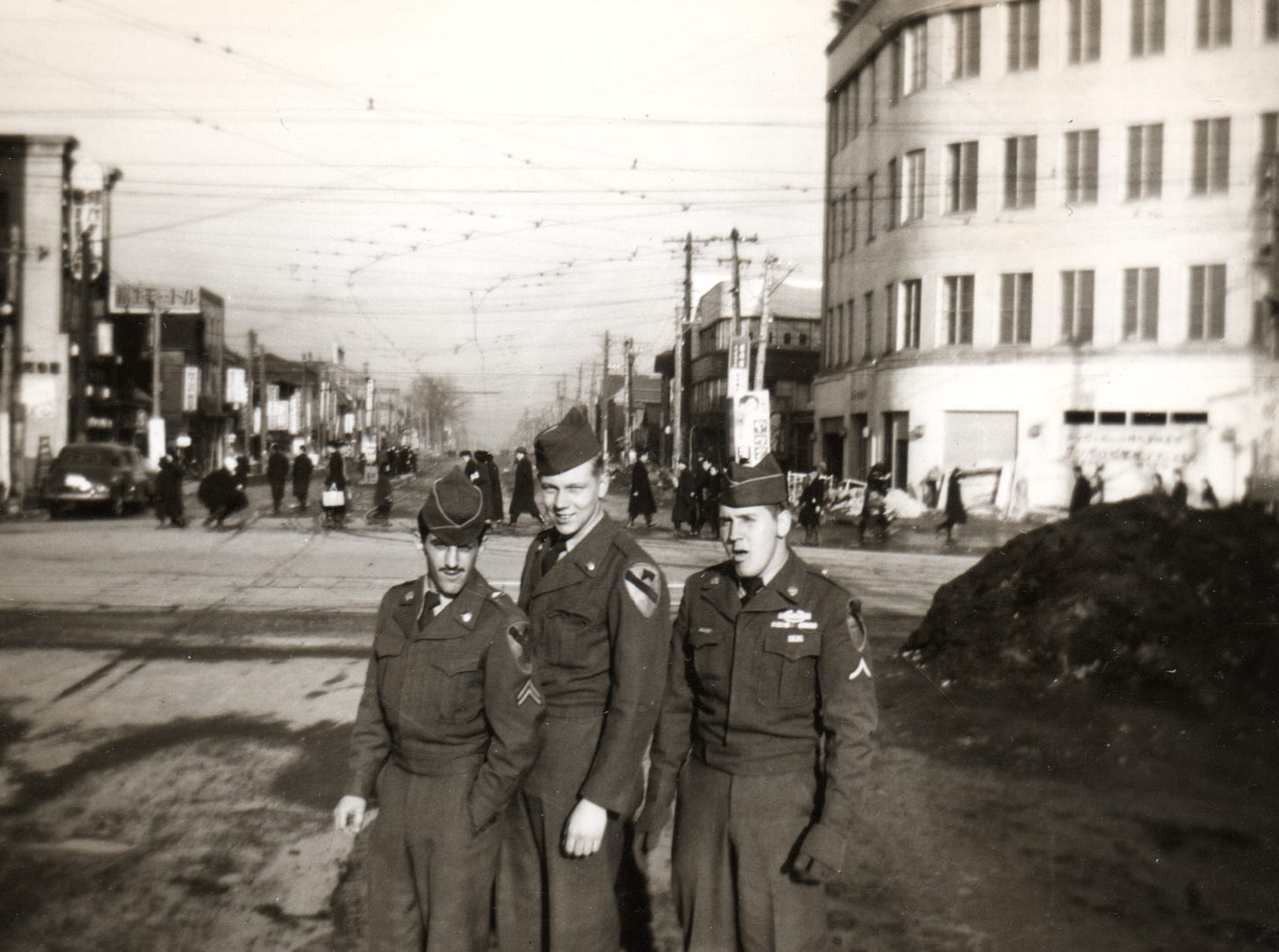
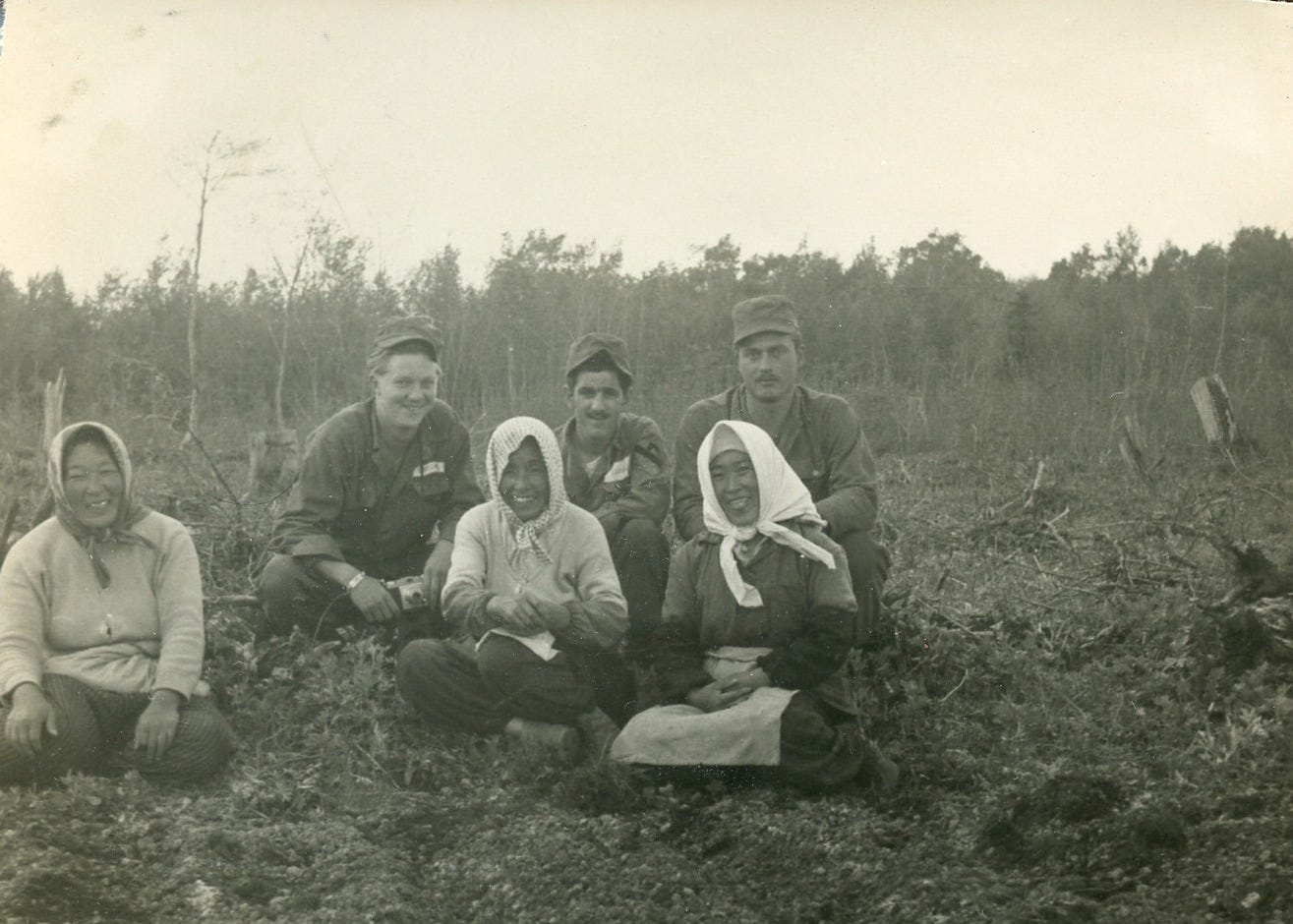
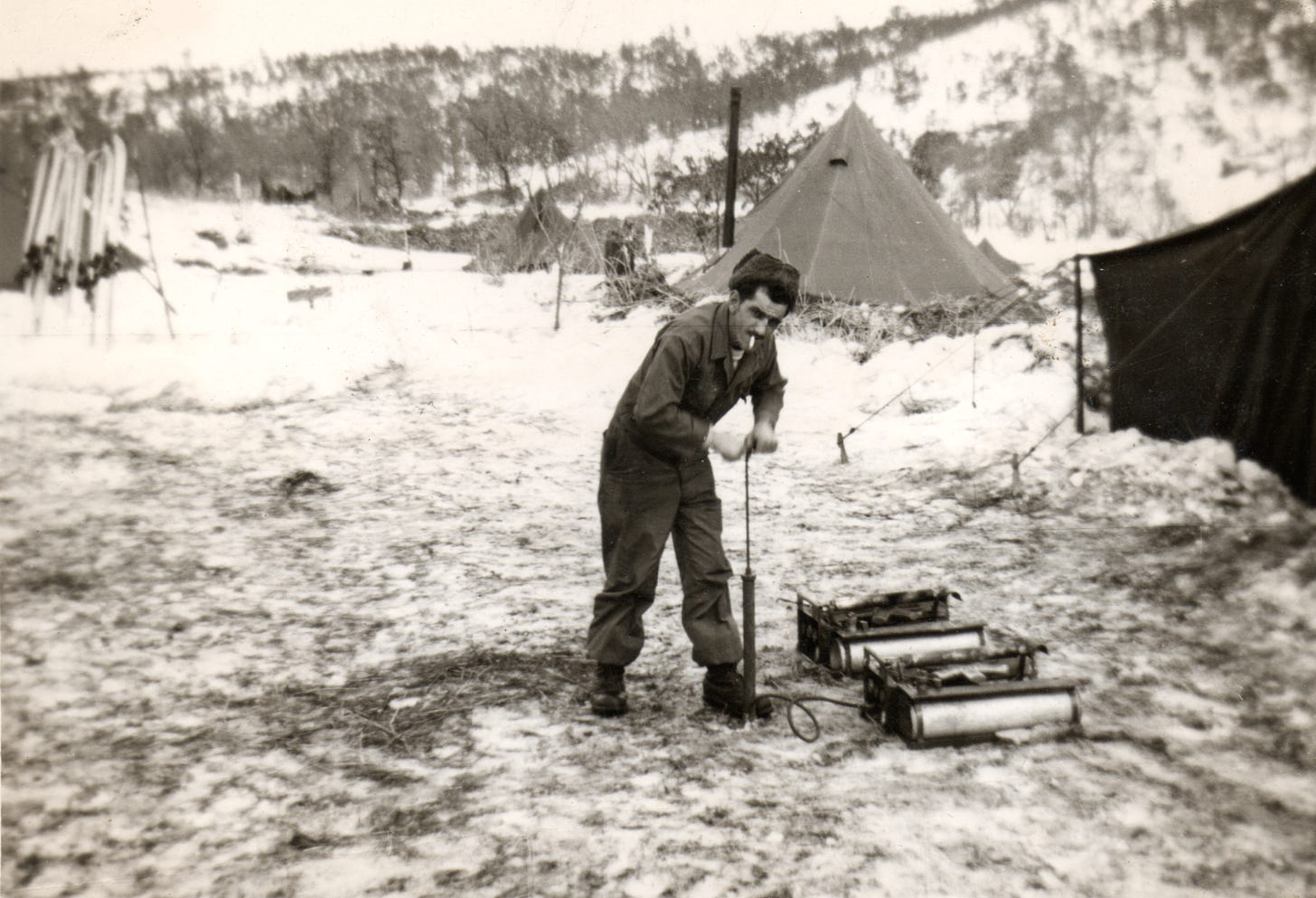

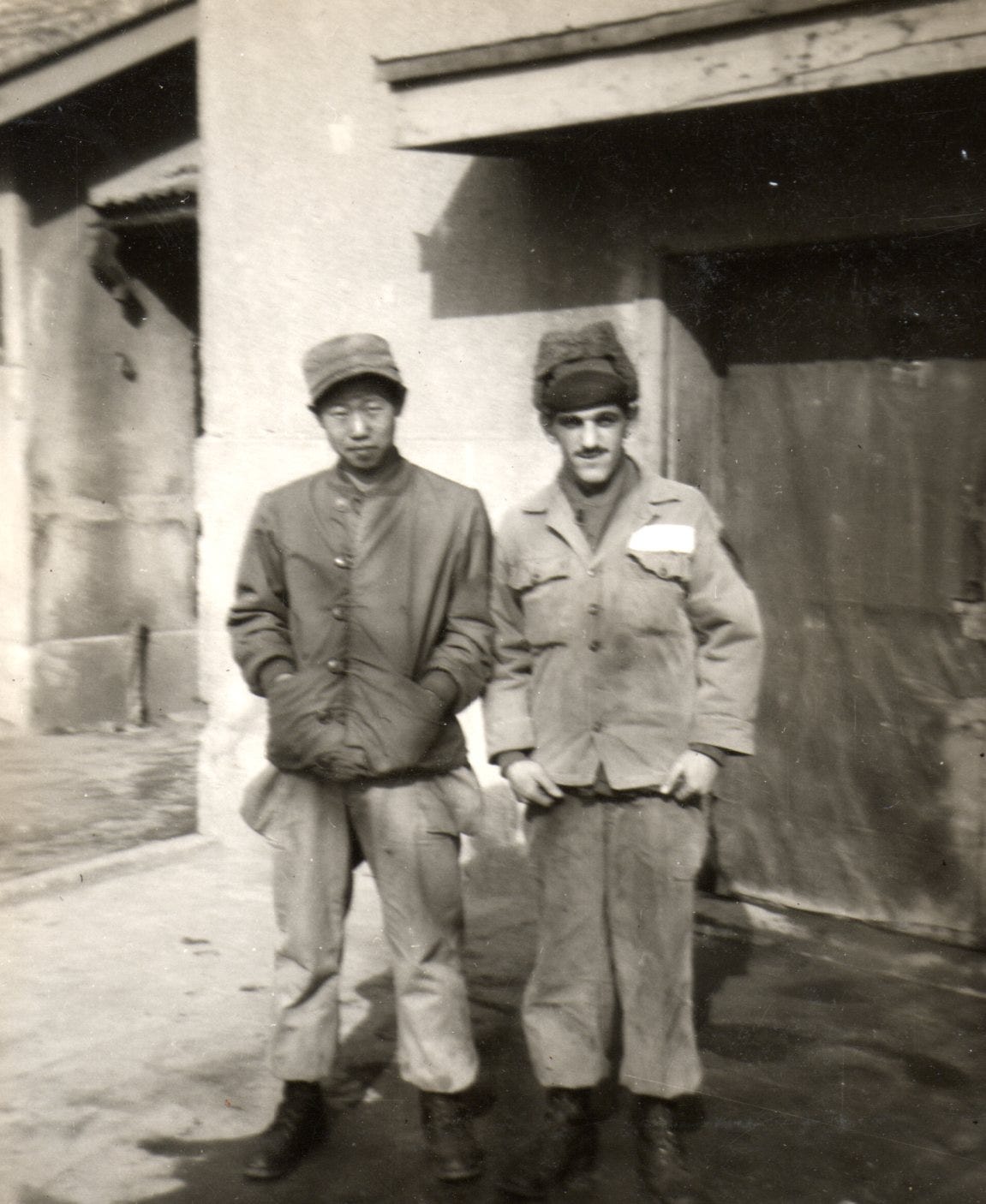
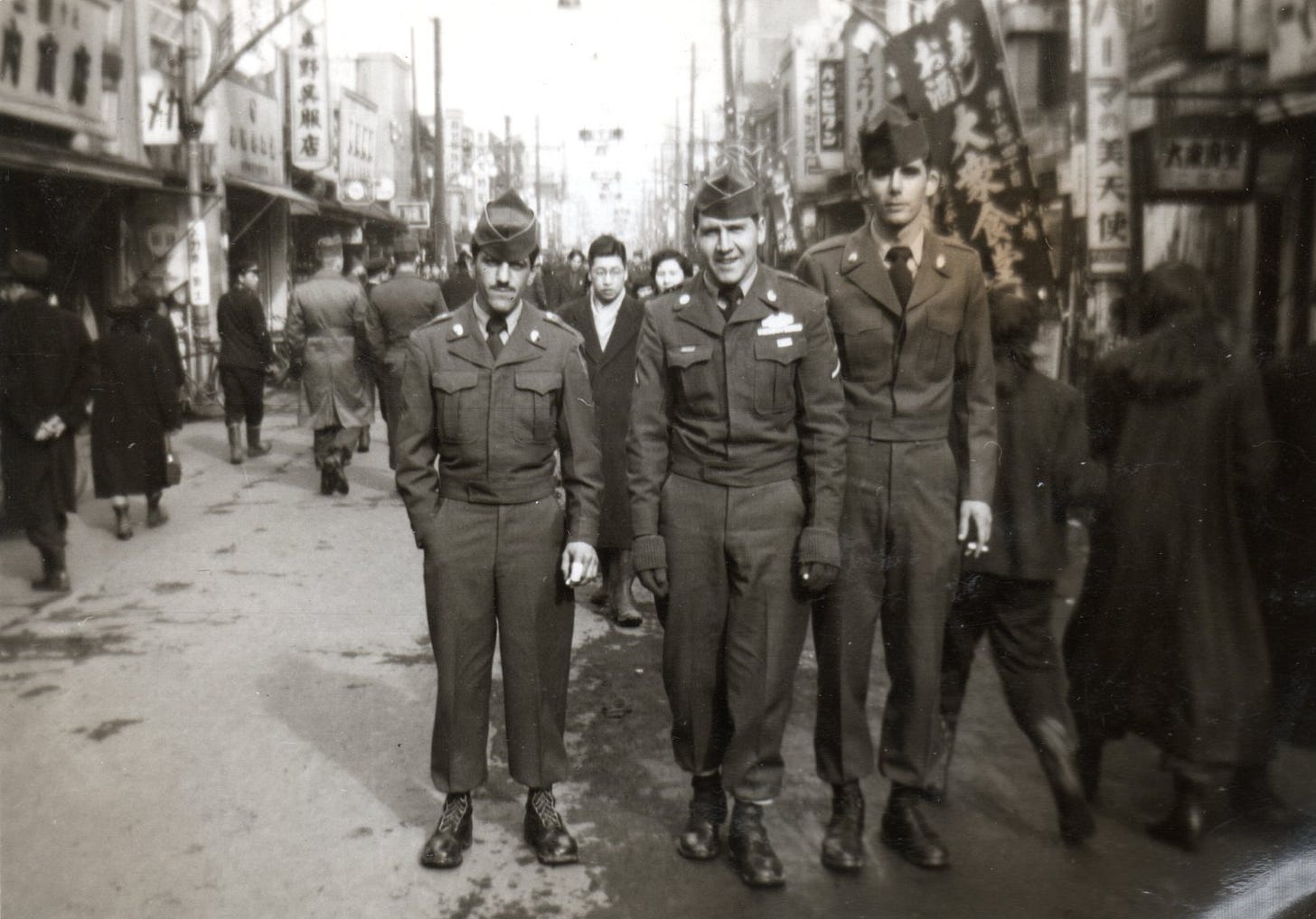
Interesting part of history I had no idea of. Learned something today, thanks.